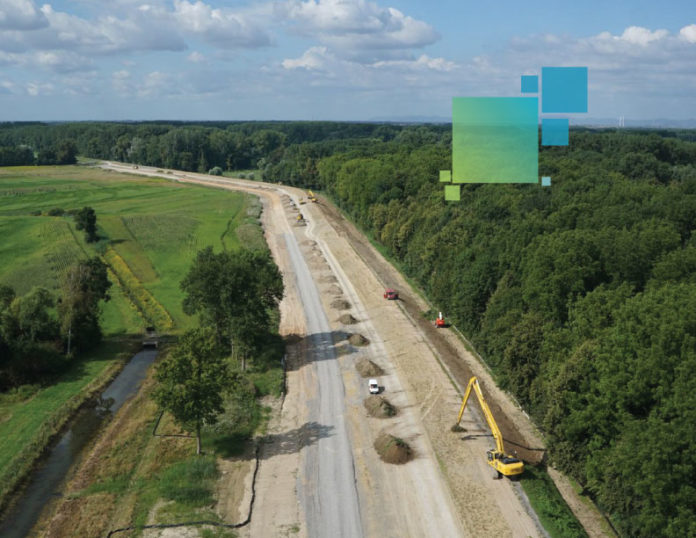By Josh Weiss
There is little disagreement about the need to revitalize our nation’s infrastructure. While we’ve had an ongoing conversation about the state of infrastructure in the country, we were having the wrong conversation unless we shift the discourse to focus on how technology can improve our infrastructure.
Importantly, the Infrastructure Investment and Jobs Act has taken this need into account. It empowers transportation departments to deploy the use of advanced digital construction management (ADCM) systems, practices, performance, and benefits.
ADCM applies to all phases of the construction lifecycle (including design, engineering, construction, and operations phases) and all stakeholders. This is good news to businesses and taxpayers alike.
The key to this approach is the intelligent deployment of technology. The modern jobsite can — and should — be as technologically advanced as the modern office.
Technology is the professional partner contractors need
Understanding how technology can help the industry navigate the current landscape requires insight into the challenges that contractors face.
Many manufacturing industries benefit from largely standardized, repetitive processes that perform within highly controllable environments. These conditions typically result in practices and systems that prioritize specialization as the winning game.
These conditions stand in stark contracts to the project nature of infrastructure development. Here, unique and highly interdependent operations accentuate the possibility of outliers.
This explains the frequent occurrence of projects blowing through time and budget goals. Construction is a collaboration game, and generalists — not specialists — often surface as the winning players.
Successful ADCM solutions and technologies will need to excel in coordinating critical success factors early and comprehensively in the life of an infrastructure asset. More specifically, the right technology mix needs to address all phases of construction.
Technology is not killing jobs
Demographics, preferences and the cyclical nature of the construction industry systemically hurt the construction labor market. Most contractors anticipate a growing quantitative and qualitative skill shortage.
In this context, successful technologies need to be easy-to-use and collaborative. The last years have seen promising improvements in user interfaces and integrated workflows allowing generalists to quickly be efficient. In addition, cloud-enabled data sharing and support functions enable everyone to work as a team.
But technology doesn’t stop with enabling workers to accomplish more on the jobsite. We’re experiencing an emerging generation of operators leveraging technology to turn construction equipment into collaborative robots.
This approach is redefining how the job is done on-site. Never has it been more accurate to say that technology is not killing jobs. Rather, technology is skilling jobs.
Finally, technology can also play a key role in providing safety awareness on site. As workers, equipment and stationary objects are digitally enabled and spatially aware, the prevention of accidents and collisions needs to be part of the ADCM technology scope.
Making a connection: Giving jobsites the data they need
The last decade has seen tremendous growth in the number of connected devices.
Many construction machines are now able to self-diagnose their health condition, order their own parts and alert owners and operators on key events. While these innovations have improved cost and utilization parameters, different approaches will be needed to address productivity.
For gains to happen here, ADCM technologies need to understand if and how the machine produced the right output at the right time and the right location. Machine data thus needs to do more than looking in the mirror; it needs to assess how well machine control systems have shaped the site.
Both cost and sustainability priorities require the construction industry to review how efficiently precious resources are transformed into lasting infrastructure. This is not just good design; it also means optimal estimations on the quantity and location of where materials need to be moved.
Downloadable data models can then instruct machine control systems to move material as planned. Finally, this also means that the actual construction is documented in “Infrastructure time capsules” available to later stakeholders for operating, maintaining or refurbishing the asset.
Coordination and collaboration are imperative
Addressing how to improve the country’s infrastructure is long overdue. Most third-party assessments make it clear we can no longer deny our infrastructure is in desperate need of repair.
Given the integrated nature of construction projects, we have seen that the coordination and collaboration of stakeholders across all phases of construction are imperative. This entails the sharing of information: A common perspective on how physical and digital reality align.
As apps, smartphones and cloud-abled devices improve the interaction of field and office, we also need to stay clean of indulging data for the sake of data. For ADCM to be successful, it needs to be construction management with digital, not for digital.
Putting the user into the focus of attention has revolutionized shopping, travel, entertainment, and office work. Making technology innovation and adoption a centerpiece of the construction industry could be equally impactful.
While the topic has new relevance in the wake of the latest infrastructure bill, it extends beyond a single piece of legislation.
It is difficult to imagine how traditional approaches will help solve the ongoing effects of the skilled labor shortage or the needed transition to a truly sustainability-focused building approach without making technology a centerpiece of the conversation.
It’s time to start having the right conversations about technology and infrastructure, and we have everything we need to begin. What are we waiting for?






